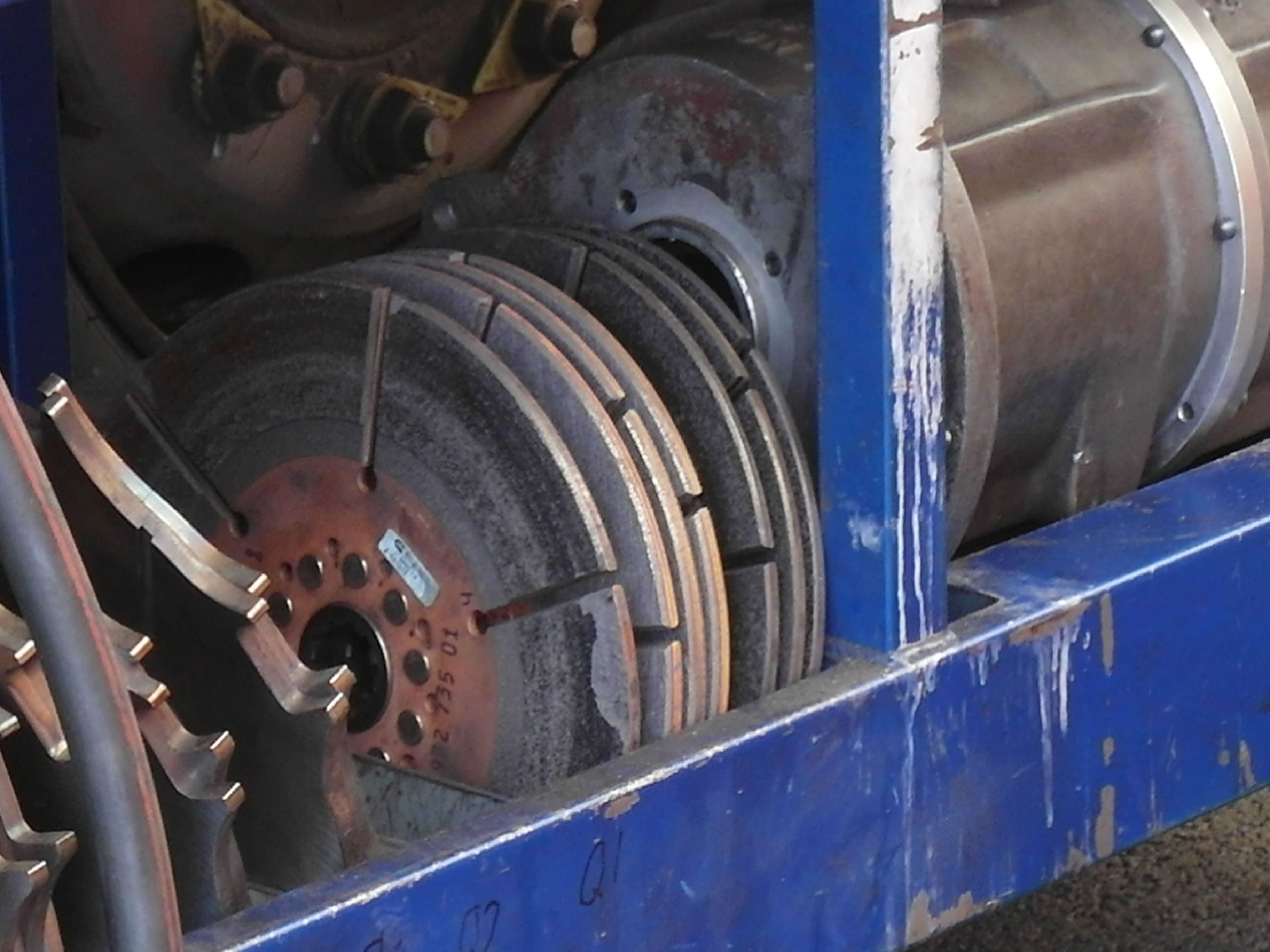Top Fuel clutch construction
Drag cars such as those found in Top Fuel and Funny Car classes produce such prodigious torque that traditional gearbox-based transmission systems would be instantly torn apart on launch. These cars therefore rely on a complex multi-plate clutch system to transfer power progressively from the engine to the rear wheels. At first glance, the clutch system on a Top Fuel car does not look all that different from any other multi-plate racing clutch, except that it is considerably larger and is not attached to a gearbox. However, closer inspection reveals that it is unlike any other system found in motorsport.
In essence, the clutch found on a Top Fuel dragster or Funny Car is a centrifugal unit, augmented by a pneumatic release bearing. It operates according to a process of controlled slippage to feed in the engine power gradually; if it were to lock immediately then the dragster would simply break traction and light up the rear wheels.
The basic components that make up the Top Fuel clutch are as follows. At the engine end is the flywheel, which forms an integral part of the system, while at the rear is a pressure plate or ‘cap’, with the rest of the components clamped between these parts. The components consist of up to five friction discs, separated by ‘floater plates’; these transfer the drive between the friction discs. The floaters are held in place by a number of stands, with studs running through their centres, which also connect the cap and the flywheel together. The cap also doubles as a mounting for the clutch fingers, which as explained below are the key to the clutch’s operation.
The clutch’s friction discs are generally considered disposable items on a race weekend, and sintered iron is the favoured material for their construction owing to its excellent friction properties. The material can be engineered to provide excellent bite, and is available in varying Rockwell hardness ratings to govern the level of bite and slippage.
Sometimes all the discs will be replaced after each run; however, combinations of fresh and worn discs can be used to provide a particular level of slippage. Sometimes the discs and floaters can weld together during the run, and even after a car returns to the pits the components can be so hot that the mechanics need asbestos gloves to handle them. Most clutches now feature titanium pillars for the floaters and titanium cover plates, while the floaters themselves are made from steel.
The clutch slip is primarily controlled by levers attached to the clutch cover. As engine rpm increases, the levers are forced out against the pressure plate, compressing the clutch and locking the friction discs and floaters together, thus allowing more power to be gradually transmitted to the wheels. Most clutches have 18 levers, which can be adjusted individually to control locking of the plates. The addition of weights, in the form of nuts, is used to fine-tune the rate at which the clutch engages.
Gauging how much weigh to add or remove is one of the black arts of dragster set-up. Adding weight to the fingers means the clutch will engage at a lower rpm on the initial hit of the throttle, whereas taking weight off will allow the motor to reach higher rpm before engaging. If a car’s crew chief determines that a track has plenty of grip he will add weight to the clutch, meaning the power will be deployed quicker, resulting in a faster run. Conversely, if a track is low grip he will remove weight to provide a softer ‘hit’. It is a very fine line between pulling a fast run and vaporising the tyres, and the winner of most events will invariably be the one to have best judged their clutch set-up.
The driver has no control over the clutch’s engagement. In addition to the centrifugal weights, the level of locking is also governed by a pneumatic release bearing. As the driver hits the throttle, a microswitch initiates a pneumatic timer that controls the operation of the clutch release bearing, often called the ‘cannon’. This bearing limits the movement of the clutch fingers and the level of locking in the clutch, and as the clutch timer counts down, pressure is released from the hydraulic system, moving the release bearing and allowing the fingers to lock the clutch up.
It would be reasonable to assume that this timed engagement is controlled by a microprocessor system; however, only a very basic mechanical system is allowed. The clutch will typically be set so that when the driver hits the throttle to launch the car, the engine will be spinning in the region of 5000 rpm before it engages enough to actually launch the car off the starting line. If for some reason the driver needs to get off the throttle to prevent wheel spin, or any other factor interrupts the run, the timer sequence cannot be adjusted.
Overall, the Top Fuel clutch is a fascinating piece of engineering, tailored to the unique demands and regulations of a brutally powerful form of motorsport.

Fig. 1 - A Top Fuel team will use many clutch plates over a weekend, with combinations of worn and new plates used to tailor the level of clutch lock-up
Written by Lawrence Butcher